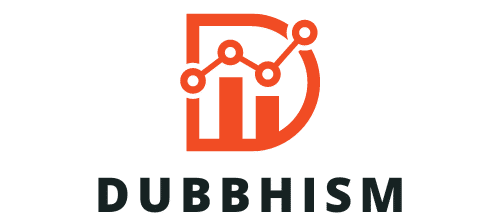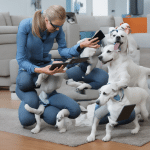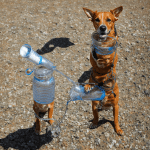As a track and field coach or athlete, you understand the value of feedback in training. It not only helps to understand the areas of improvement but also provides a measure to track progress. Traditionally, feedback was often delayed because of the time it took to manually analyze performance. However, with the advent of technology, real-time feedback is now possible. This immediate feedback allows coaches and athletes to make instant corrections and improvements to their technique, enhancing progression and performance. This article will explore the ways to leverage technology for real-time feedback in track and field training.
Utilizing Wearable Devices
Wearable technology has become a significant part of sports training. In track and field, it is particularly useful for providing real-time feedback.
A lire aussi : What Are the Key Factors in Developing a Comprehensive Athlete Wellness Program?
Wearable devices such as GPS watches, heart rate monitors, and smart clothing embedded with sensors can provide immediate data on an athlete’s speed, distance covered, heart rate, and more. This allows both the coach and the athlete to know exactly how well they are performing at any given moment, enabling them to make immediate adjustments if necessary.
For instance, a GPS watch can track an athlete’s running speed and distance. If the athlete is not meeting their target speed or distance, they can immediately adjust their pace or technique based on the data from the watch. Similarly, a heart rate monitor can help ensure that the athlete is training within their optimal heart rate zone, which is crucial for endurance training.
Sujet a lire : How to Develop Emotional Resilience in Athletes Facing Competitive Failures?
Furthermore, smart clothing embedded with sensors can provide data on muscle activation and biomechanics. This can help identify any potential muscle imbalances or improper technique that the athlete may not be aware of, enabling them to correct these issues in real-time.
Leveraging Video Analysis Tools
Video analysis is another powerful tool that can provide real-time feedback in track and field training.
High-speed cameras and video analysis software can capture and analyze every detail of an athlete’s performance. They can provide metrics such as stride length, stride frequency, and more. These metrics can be viewed in real-time, allowing coaches and athletes to see exactly what is happening and make immediate corrections.
One of the main advantages of video analysis tools is that they offer a visual form of feedback. This makes it easier for athletes to understand what they are doing right or wrong. For instance, if an athlete is over-striding, they can see this clearly in the video and understand what they need to do to correct it.
Moreover, video analysis tools often come with drawing and annotation features. Coaches can use these features to highlight key points in the athlete’s technique, making the feedback even more clear and actionable.
Implementing Tracking Systems
In addition to wearable devices and video analysis tools, various tracking systems can also be used to provide real-time feedback in track and field training.
These tracking systems use technologies such as RFID (Radio Frequency Identification), LIDAR (Light Detection and Ranging), and computer vision to track an athlete’s movements. They can provide data on metrics such as acceleration, deceleration, and more.
For example, a LIDAR-based tracking system can measure an athlete’s speed and acceleration with high accuracy. If the athlete’s speed or acceleration drops below a certain level, the system can immediately alert the coach, who can then provide feedback to the athlete.
Similarly, a computer vision-based tracking system can track an athlete’s movements and analyze their biomechanics. This can help identify any issues with the athlete’s technique that may be causing them to underperform.
Using Mobile Apps and Online Platforms
Finally, mobile apps and online platforms are also effective tools for providing real-time feedback in track and field training.
There are several apps and platforms available that offer features such as live tracking, performance analytics, and more. Athletes can use these tools to monitor their performance in real-time and receive immediate feedback.
For instance, an app may provide live tracking of an athlete’s pace, distance, and time. If the athlete is falling behind their goal pace, they will see this on the app and can adjust their speed accordingly.
Moreover, some apps and platforms also offer social features, allowing athletes to share their performance data and receive feedback from their peers. This can offer additional motivation and help athletes push their limits.
In sum, technology offers a multitude of ways to provide real-time feedback in track and field training. By utilizing wearable devices, video analysis tools, tracking systems, and mobile apps and platforms, coaches and athletes can gain valuable insights into their performance and make immediate corrections, thereby enhancing their training efficiency and effectiveness.
Harnessing Virtual Reality and Augmented Reality
Making strides in the realm of sports training, Virtual Reality (VR) and Augmented Reality (AR) technologies offer unique ways to provide real-time feedback in track and field training.
VR and AR technologies enable athletes to train in simulated environments that closely mimic real competitions. By using VR headsets or AR glasses, athletes can virtually experience specific race scenarios and perfect their strategies and techniques based on instant feedback.
For example, a sprinter can use VR technology to simulate a race against virtual opponents. The VR system can provide real-time data on the sprinter’s speed, stride length, and reaction time at the start of the race. If the sprinter’s reaction time is slow, they can immediately work on improving this aspect during the next virtual race.
Furthermore, AR technology can overlay digital information onto the real world, providing athletes with immediate feedback during their training sessions. For instance, an athlete can wear AR glasses that display their speed, heart rate, and other performance metrics while they are running. This allows them to adjust their efforts in real-time based on the feedback they see in their field of vision.
Moreover, VR and AR technologies also offer the benefit of safe training. By simulating different training scenarios, they can help athletes prepare for various conditions without the risk of injuries.
The Impact of Big Data and Machine Learning
Big data and machine learning are powerful technologies that can revolutionize the way we provide real-time feedback in track and field training.
Big data refers to the vast amount of data generated in sports training and competitions. This data, when analyzed, can provide deep insights into an athlete’s performance. For example, by collecting and analyzing data on an athlete’s speed, stride length, heart rate, and more over a period, coaches and athletes can identify patterns and trends that can help optimize their training strategies.
On the other hand, machine learning, a subset of artificial intelligence, can use this big data to learn from past performances and provide real-time feedback. Machine learning algorithms can analyze an athlete’s data and compare it with previous performances to predict future results.
For instance, if the algorithm detects that an athlete’s speed tends to drop in the final stages of a race, it can alert the athlete in real-time during their training sessions. This allows the athlete to work on maintaining their speed throughout the race.
In summary, big data and machine learning can provide valuable and timely feedback that can significantly improve an athlete’s performance.
Conclusion
Real-time feedback is crucial in track and field training as it allows athletes and coaches to immediately identify and address possible areas of improvement. The advent of technology has revolutionized the way this feedback is provided, making it more immediate, precise, and actionable.
From wearable devices that provide instant data on an athlete’s speed and heart rate, video analysis tools that offer a visual form of feedback, to tracking systems using technologies like RFID and LIDAR, the possibilities are endless. The use of mobile apps and online platforms, along with emerging technologies like VR, AR, big data, and machine learning further enrich this ecosystem, offering varied and effective ways to provide real-time feedback.
As technology continues to progress, it is bound to provide even more innovative solutions that will further enhance the efficiency and effectiveness of real-time feedback in track and field training. Thus, embracing these technological advancements is no longer an option but a necessity for anyone serious about improving their performance in track and field.











